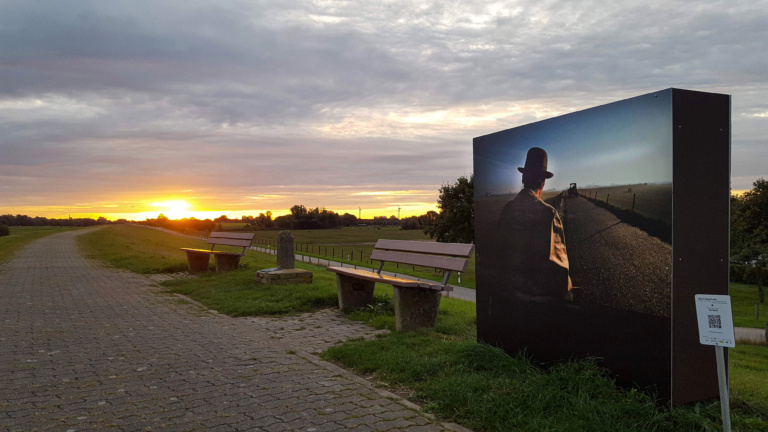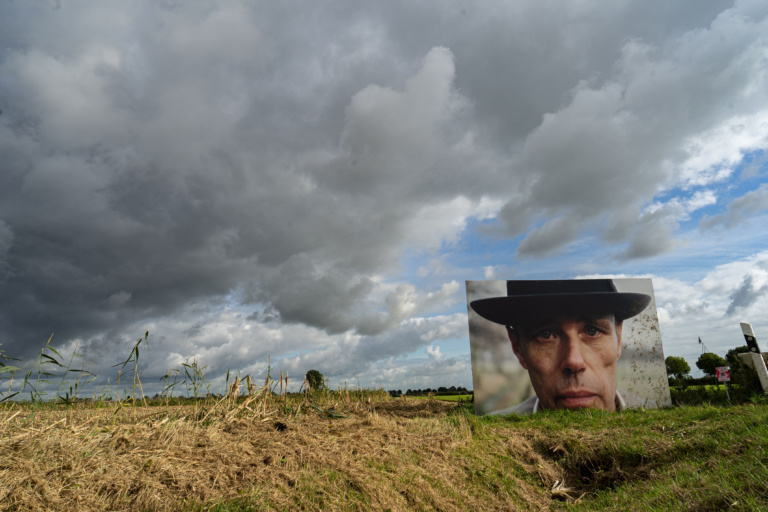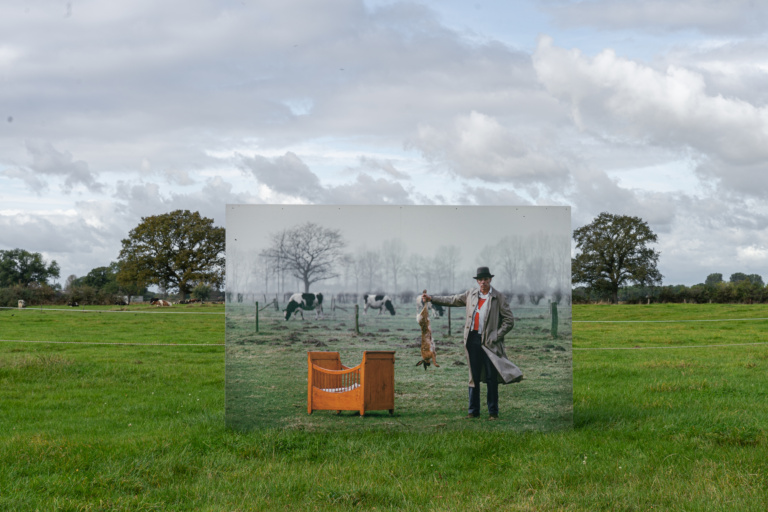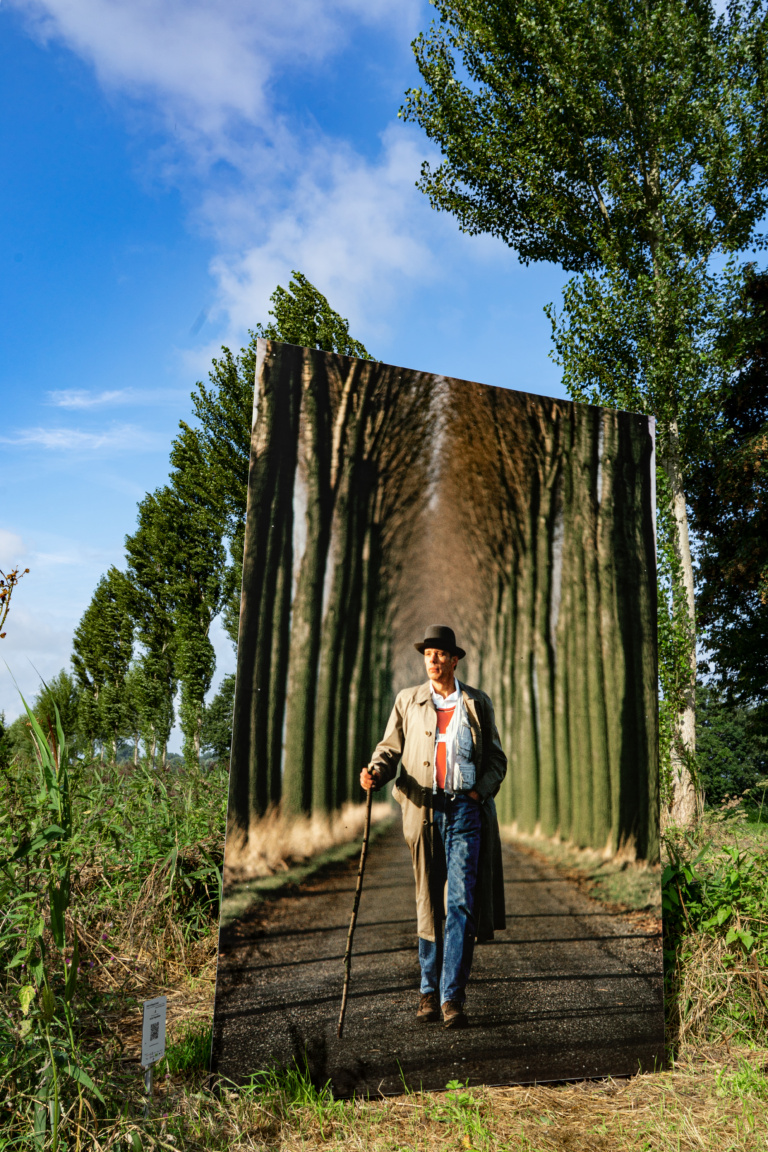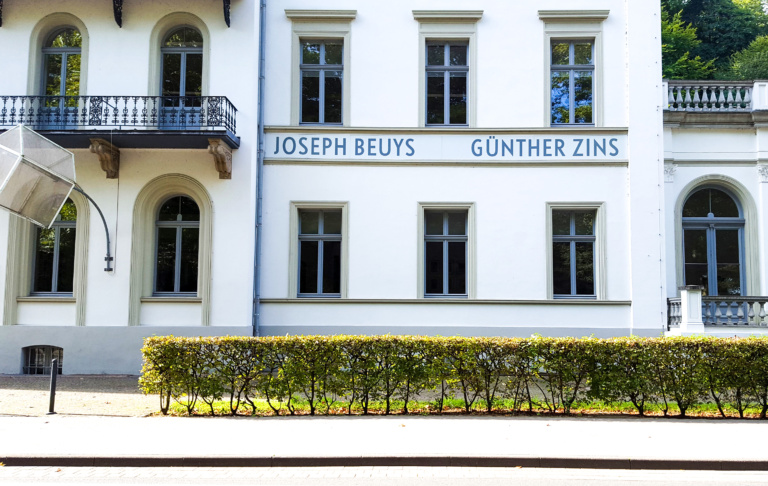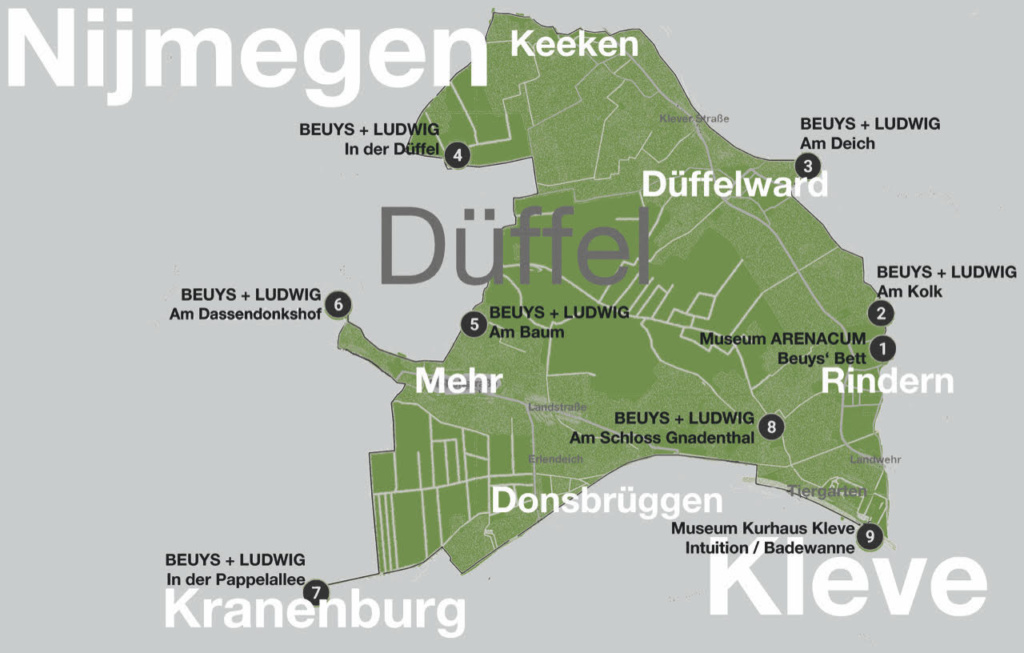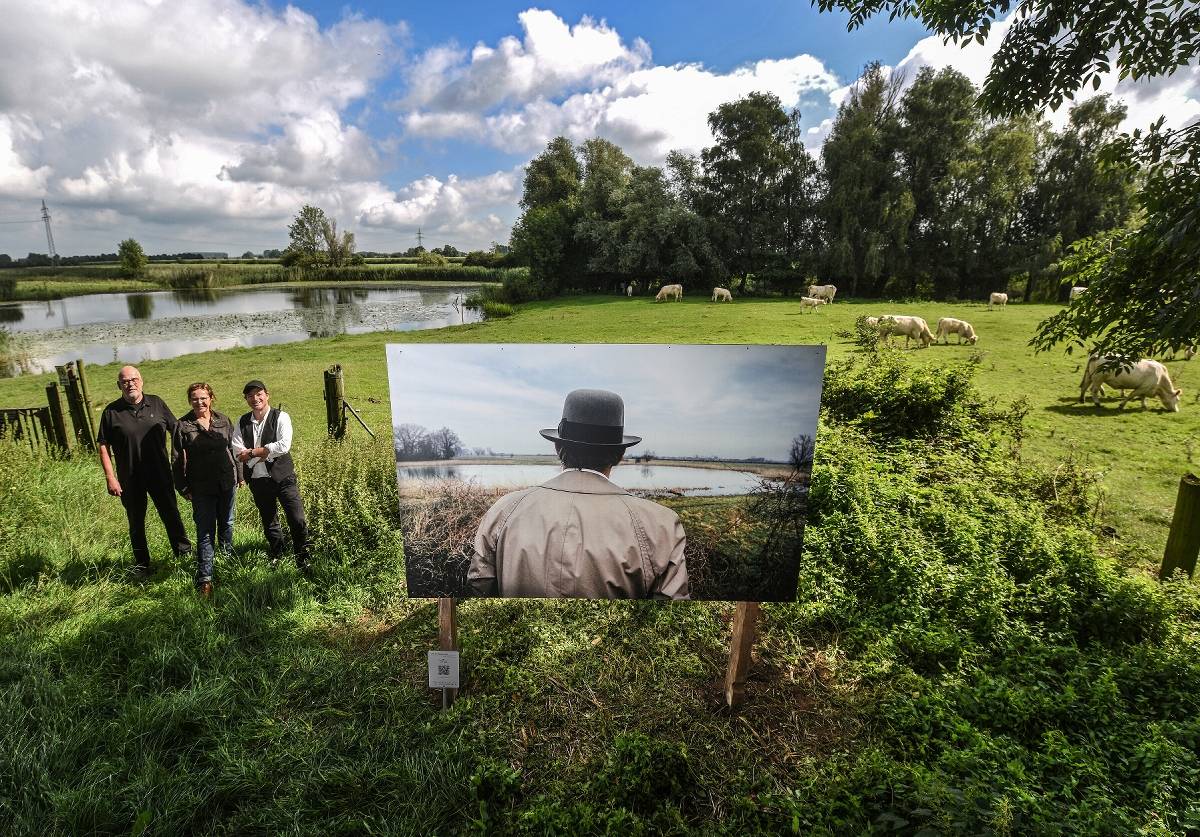The Idea!
The man with the hat (...) is the most famous, most controversial German artist of the present. Where does he come from, where does he want to go?
This is how journalist Peter Sager begins his article “Beuys: Die heilige Kuh vom Niederrhein” (“Beuys: The Holy Cow of the Lower Rhine”) in the ZEIT-Magazine in 1978, to which Gerd Ludwig contributed portrait photographs of Joseph Beuys, taken during a tour of the three – P. Sager, G. Ludwig and J. Beuys – through the Lower Rhine landscape between Kleve and Nijmegen, called the Düffel.
Now, 43 years later, a selection of these beautiful photographic impressions of the photographer Gerd Ludwig, who currently resides in the USA, returns to the place where they were originally taken.
How did the photographer Gerd Ludwig, the ZEIT journalist Peter Sager and Joseph Beuys perceive this landscape in 1978? What has changed?
Everyone can experience this landscape and its changes over the past 43 years on a bicycle tour with Joseph Beuys from photograph to photograph through the natural landscape. At the same time, the experience of moving through nature “with Beuys” (so to say) offers opportunities to immerse oneself in Beuys’ world of ideas, to trace its interconnectedness with the Lower Rhine landscape, and to discover its after-effects.
Here is an overview of the stations. On the bike tour you will find QR codes at all stations, which you can use to get background information, quotes, pictures or video links. Have fun on the Beuys`Land tour!
The Stations of the Beuysland Tour
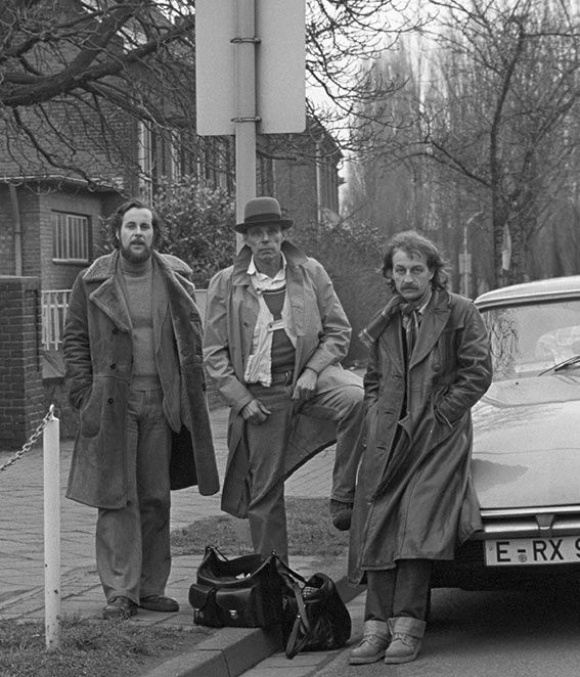
Photographer Gerd Ludwig
The following text is from Gerd Ludwig's website.
Gerd Ludwig was born in Alsfeld, Germany. Initially he studied German literature, political science, and physical education at the University of Marburg, but interrupted his studies to travel in Scandinavia and North America while supporting himself with jobs as a bricklayer, sailor, gardener and dishwasher. After his return to Germany, he studied photography for five years with Professor Otto Steinert at the Folkwang-Hochschule (now Folkwang University of the Arts), graduating in 1974 with a degree in Photo Design from the University of Essen. The following year, he co-founded VISUM, Germany’s first photographer-owned photo agency. In 1978, he moved to Hamburg and began working for Geo, Stern, Spiegel, Zeit-Magazin, Time, and Life, as well as photographing advertising campaigns.
I would like to express my gratitude and appreciation to all the wonderful people who have been instrumental in making the BEUYS LAND installation in the Düffel a reality.
Special thanks are due to the organizers behind the Beuys Land team, whose flashes of inspiration, lifeblood, and creative ideas formed the basis for this text and the landscape installation: Helga Diekhöfer, Josef Gietemann, Jutta Tönnissen and Hubert Wanders. Their vision and commitment brought this project to life. The team and I are also indebted to a committed group of supporters for transforming what started as a simple idea into the frequently surprisingly intricate practice it has become. My heartfelt thanks go to theFreundeskreis Museum Kurhaus und Koekkoek-Haus Kleve e.V., as well as the team at the Museum Forum Arenacum in Rindern. I would also like to express my special thanks to the team of the Museum Kurhaus Kleve, the Dike Association Kleve Landesgrenze, the municipality of Kranenburg, the city of Kleve.
Frank Mehring
Outreach
- FAZ: “Heiliger Joseph, wir danken dir”: Excerpt with reference to full text: https://www.gerdludwig.com/news/2021/10/beuys-land-in-faz
- ROTARY Magazin “Stadt, Land, Beuys” https://rotary.de/kultur/stadt-land-beuys-a-17916.html
- NRC “Joseph Beuys fietstocht”: https://www.nrc.nl/nieuws/2021/08/31/iedere-duitse-stad-wil-een-stukje-van-joseph-beuys-a4056606
- Gelderlander “Route in het landschap”: https://www.gelderlander.nl/berg-en-dal/kunstenaar-beuys-keert-terug-in-de-duffelt-en-nodigt-uit-na-te-denken-over-klimaatverandering~ab455ffb/206925805/
- Rheinische Post: “Auf den Spuren von Beuys”: https://rp-online.de/nrw/staedte/kleve/kleve-eine-reise-auf-den-spuren-von-beuys_aid-62308347
- VOX: “Kunstenaar Joseph Beuys was een fantast én een vroege milieuactivist” https://www.voxweb.nl/nieuws/kunstenaar-joseph-beuys-was-een-fantast-en-een-vroege-milieu-activist



